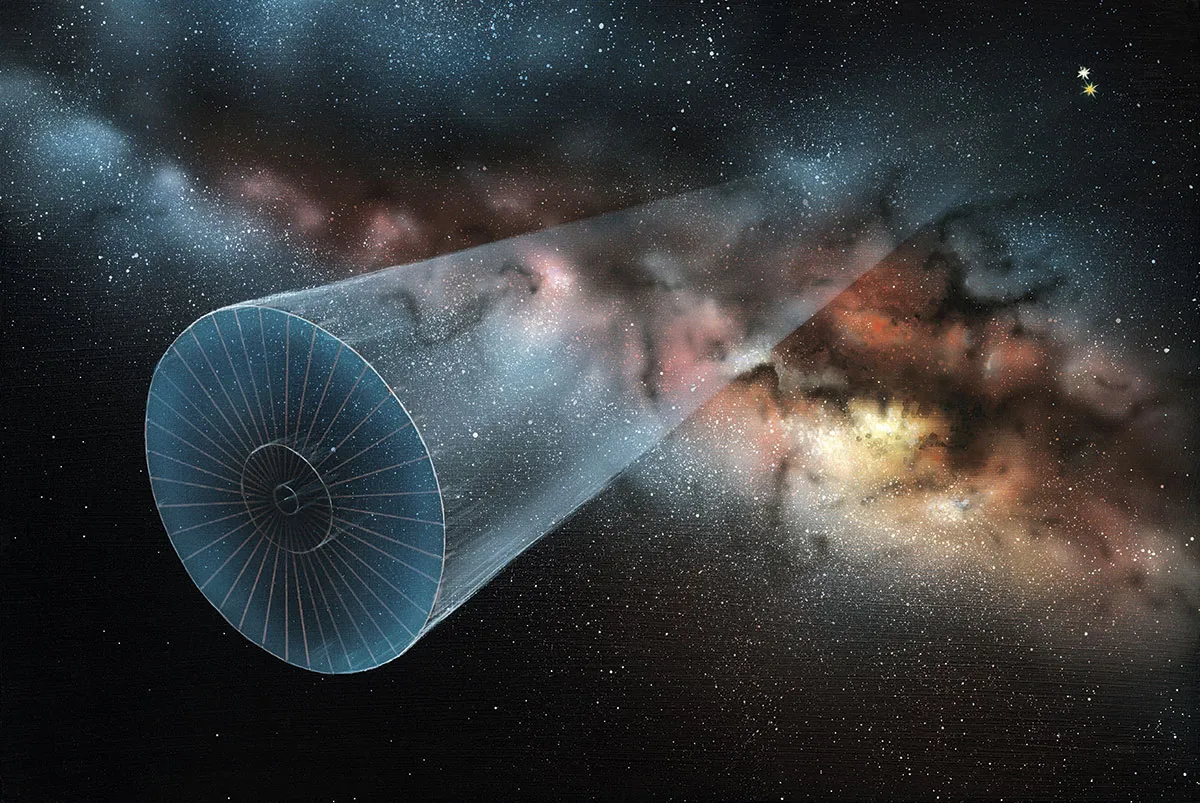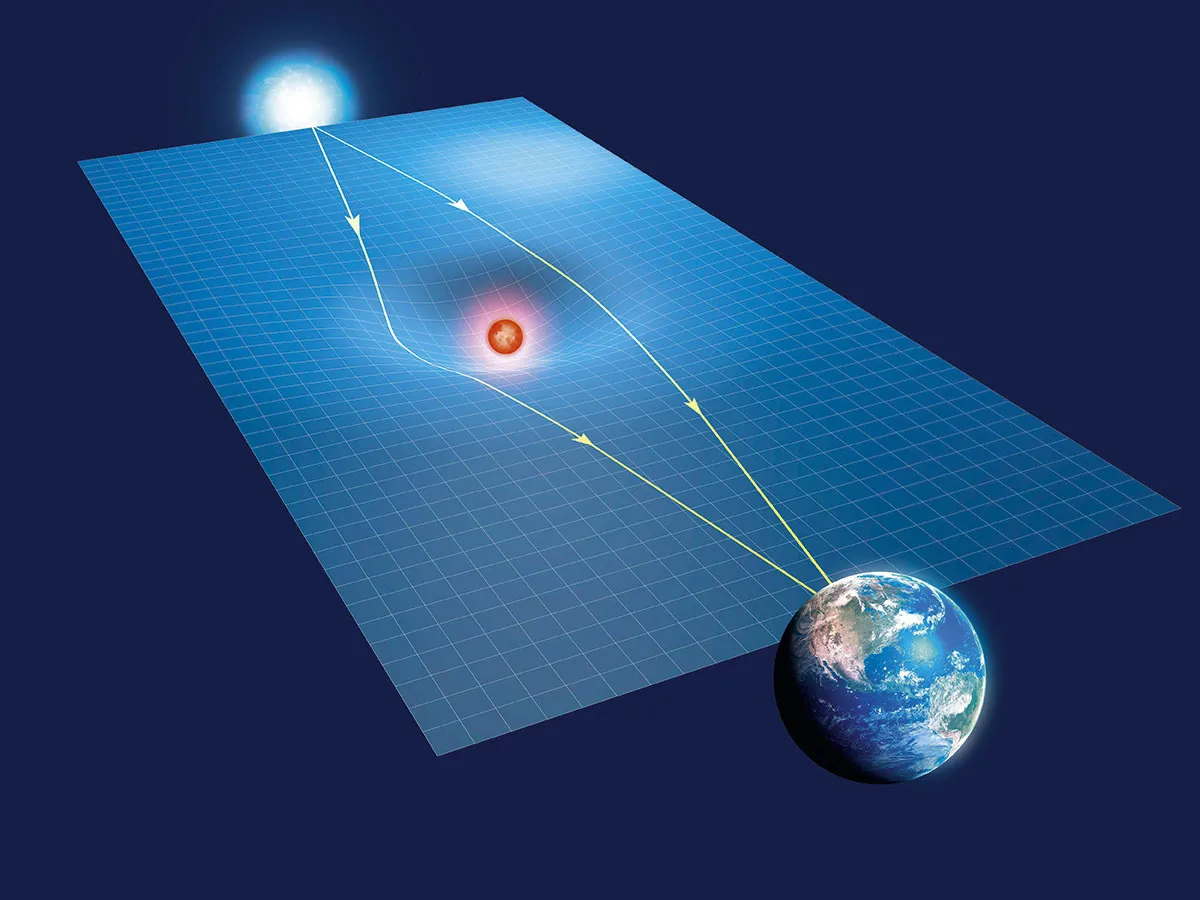Project Galileo is a new mission that will hunt our Solar System and beyond for remnants of alien civilisations. Whether it's potential alien probes – like 'Oumuamua – or even a distant megastructure, these signs of extraterrestrial life will completely change our place in the Universe.
Megastructures

Just as our global energy needs are always increasing, so too will the energy needs of an advanced alien civilisation. In 1960, Anglo-American physicist Freeman Dyson suggested that, eventually, extraterrestrials (ETs) will want to use the entire energy output of their parent star.
They might do this, he argued, by dismantling their asteroid belt and reconstructing it in the form of a spherical shell that completely encloses their sun. Not only would this provide tremendous amounts of energy, it would offer an enormous surface area – the interior of the shell – for living space.
A Dyson sphere would be unstable but an equatorial belt or a vast constellation of satellites could still intercept huge amounts of stellar energy. Such a structure might be detectable because the laws of thermodynamics predict that the intercepted starlight is emitted as heat radiation, or far-infrared.
Also, a large number of bodies in orbit around a star might eclipse its light, causing it to fluctuate wildly. This was seen in the case of KIC 8462852 or ‘Tabby’s star’. Although this was explained by dust within our own Solar System, the possibility remains that the light of other stars might be variable in an unusual manner and explicable only by megastructures in close orbit.
Industrial chemicals

Human civilisation injects polluting chemicals into the atmosphere of Earth, and extraterrestrial civilisations may do the same. Such chemicals are not only potentially detectable but also unambiguously of intelligent origin.
If we observe a planet in a Solar System beyond our own, as the planet moves between us and its parent star, starlight will pass through its atmosphere and bites of light will be taken out at characteristic wavelengths of atmospheric chemicals. This allows astronomers to detect what substances are present in the planet’s atmosphere.
According to astrophysicist Prof Avi Loeb, some promising industrial chemicals to look for in these alien atmospheres are tetrafluoromethane (CF4) and trichlorofluoromethane (CCl3F). Both of these chemicals are refrigerants and are the two easiest chlorofluorocarbons (CFCs) to detect.
“If CCl3F and CF4 exist at 10 times current terrestrial levels, they should be detectable in 1.2 and 1.7 days of observing, respectively, with the James Webb Space Telescope [which was launched on Christmas Day 2021],” Loeb says.
Light sails

Aliens will face the same problem as we do if they cross interplanetary or interstellar space. Large amounts of fuel are needed in order to drive a spaceship. But this problem goes away if the spaceship’s power source is left at home.
This was the proposal of Robert Forward of Hughes Research Laboratories in Malibu, California. In 1984, he described a laser-pushed light sail. A payload would be attached to a large, ultra-thin sail of reflective material and this would be pushed by a solar-powered laser based in the Solar System. Forward calculated that a one-tonne probe attached to a 3.6km-wide light sail could be accelerated by a 65GW laser to 11 per cent of the speed of light and fly by the nearest star system, Alpha Centauri, in just 40 years.
This idea has been recently revived for the Breakthrough Starshot programme. It’s at an early stage, but the aim is to use a 100GW laser array to push a far more modest, one-gram (!) payload to 20 per cent of the speed of light and flyby and photograph the planet around Proxima Centauri.
If ETs use similar laser-pushed light sails to zip around their planetary systems or the Galaxy, we may be able to pick up the flashes of light when their lasers are turned on and off.
Wormhole transport systems

A sufficiently advanced civilisation might be able to manipulate space-time itself to create wormholes. These shortcuts through space-time – which are permitted to exist by Einstein’s theory of gravity – could enable a galaxy to be crossed in the blink of an eye.
Intrinsically unstable, a wormhole would need ‘stuff’ with repulsive gravity to hold open each mouth, and the energy equivalent to that emitted by an appreciable fraction of the stars in a Galaxy. We know such stuff exists because it is speeding up the expansion of the Universe in the guise of dark energy, though its gravity is too weak to prop open a wormhole.
If ETs have created a network of wormholes, it might be detectable by gravitational microlensing. This occurs when a celestial object passes between us and a distant star and its gravity briefly magnifies the light of the star.
If the object is a wormhole, the pattern of brightening and fading of the star is distinctly different, according to Prof Fumio Abe of Nagoya University in Japan. “If the wormholes have throat radii between 100 and 10 million kilometres, are bound to our Galaxy, and are as common as ordinary stars, detection might be achieved by reanalysing past data,” he says.
- This article first appeared inissue 374ofBBC Science Focus Magazine–find out how to subscribe here
Read more about alien life:
